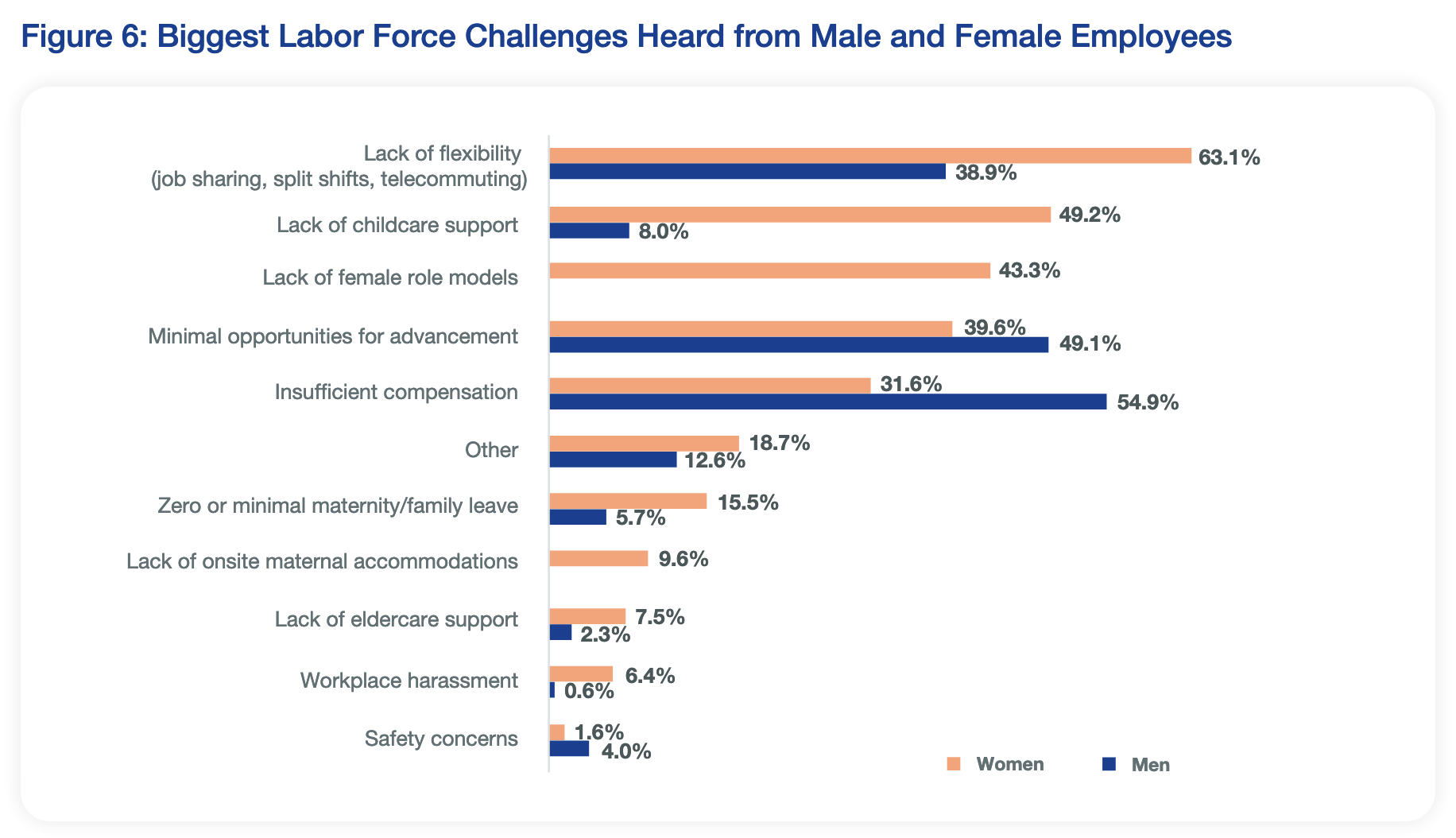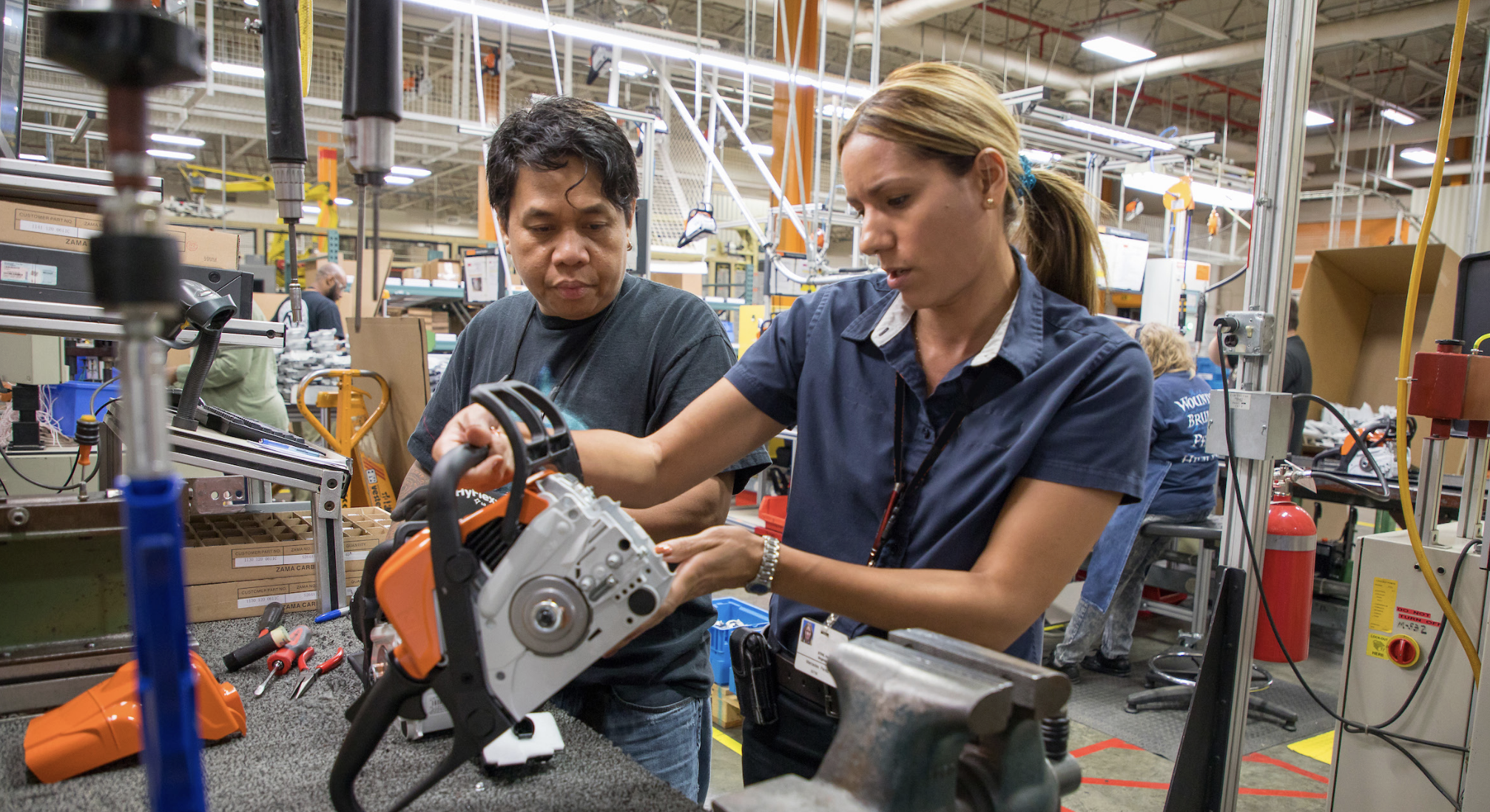Women have endured barriers to entry in manufacturing for decades. From gender pay gaps to lack of flexibility, child care support, and company-supported development and networking opportunities, there are recurring barriers women keep facing in the industry, which remain a loose end. Yet, a new study suggests women represent the largest talent opportunity for the manufacturing industry.
The report, released by the Manufacturing Institute (MI) and Colonial Life, finds that raising the number of women in the manufacturing sector by 6% would be enough to fill almost every one of the 746,000 open jobs in manufacturing as of October 2022.
To determine the findings, study author Chad Moutray, director of the Center Manufacturing Research at the MI, received 190 responses to a survey and conducted interviews with executives at seven companies from various industries and diverse sizes. The survey questions ranged from wage comparisons to workplace flexibility for women. As a result, the report recommends that companies bring in more women and diverse candidates. This more inclusive and diverse hiring approach could help improve the bottom line and attract workers who might have looked elsewhere.
Although the study does not discuss the additive manufacturing sector, in particular, women have been underrepresented historically here as well. Just like in the rest of the manufacturing industry, a wider talent pool is necessary to help close the skills gap in AM. For example, a 2022 publication by AM organization Women in 3D Printing (Wi3DP) tried to tackle the issue of gender pay as part of its dedication to promoting, supporting, and inspiring women in AM and found that even though this type of data is hard to come by, empirical and anecdotal evidence suggest there is at least some discrepancy between the salaries for men and women in the AM world.
Women in manufacturing
Zooming out of the AM ecosystem and looking at the U.S. as a whole, the U.S. Census Bureau determined that women in the U.S. make up nearly half of the working population (47.5%) but remain underrepresented in the manufacturing industry, making up roughly one-third of the workforce. Moutray’s report suggests that manufacturing recruitment needs to better match the workforce in the sector to the growth in population and communities, like African Americans and Asians, which are expected to increase in the following years.
So, what does the study data tell us about the progress, or lack of progress, in the U.S. manufacturing industry?
One of the key trends is prioritizing a diverse workplace with increased flexibility to include part-time options, remote work opportunities, and childcare alternatives. In addition, manufacturing leaders were asked in the survey about the most significant labor force challenges facing male and female employees at their company. According to the study, the top choices from women included the lack of flexibility, childcare support, female role models, minimal opportunities for advancement, and insufficient compensation.
In contrast, the chief workplace issues heard from male employees were ranked somewhat differently, with insufficient compensation, minimal opportunities for advancement, and the lack of flexibility ranking highest for men.
“While it may not be a surprise that child care availability and flexibility are top challenges for women, these latest findings make it abundantly clear that child care and flexibility are issues we cannot ignore if we are going to close the skills gap in manufacturing,” said MI Vice President of Strategic Engagement and Inclusion AJ Jorgenson. “Our industry should look at this as an opportunity to provide real solutions that better allow our workforce to manage both professional and personal responsibilities.”

Graph from MI report: “Biggest Labor Force Challenges Heard from Male and Female Employees.” Image courtesy of the Manufacturing Institute.
When asked about actions that might address various workplace challenges, more than 71% of survey respondents noted that providing opportunities for job training and continuing education, as well as maternity or family leave, retirement plans, clear paths for advancement, raises, and “return-to-work” programs would have a significant impact.
Similarly, manufacturing leaders were asked about highly valued benefits when candidates were considering employment at their company. Again, health care and paid time off were ranked highest for women and men. However, paid maternity leave was more enticing for women candidates than paid paternity leave was for men.
Improving response to workforce challenges
Other trends explored include providing job training and continuing education opportunities, developing employee resource groups, and establishing mentorship programs that would also help with retention and recruitment.
Moutray’s report states that implementing policies that can help advance and train a diversity of leaders shows a commitment to employee growth, making the company a more attractive place to stay or join. Other strategies cited for increasing female participation in manufacturing include competitive compensation, leadership development, and demonstrating zero tolerance for harassment, among others.
Responsibilities
In line with the report’s findings and with an eye on increasing female participation in the sector, the MI launched a new campaign to raise the percentage of women among manufacturers from 29% to 35% by 2030. The initiative’s focus is to help change perceptions among women and girls about manufacturing as a career, to attract and retain more female employees in the sector, and to highlight more women as role models. The campaign directly responds to all the challenges women said they faced in the workplace.
Raising the percentage of women in the manufacturing sector to 35% would bring total female employment to nearly 4.5 million at current levels, or about 800,000 more than today. That would go a long way toward closing the skills gap and would be enough to fill almost every open job in the manufacturing sector today.
In general, women are under-represented in the manufacturing industry, a leading economic engine and primary employer in over 500 U.S. counties today. Challenges facing women in the manufacturing industry go from glass ceilings to gender norms and unconscious biases—these need to dissipate to allow more women to rise to positions of power and responsibility. Unfortunately, closing the gender gap alone in the U.S. could take 132 years at the current rate. However, thanks to reports by leading institutes like MI, we can better understand the trends and identify best practices while providing insights for manufacturers.
More importantly, as Moutray concludes: “These initiatives also help to ensure that employees feel valued and that there are sufficient resources dedicated to their success and development.”
The full report is available for download here. On Tuesday, December 6, 2022, the MI’s Women MAKE America Initiative will host a virtual event featuring the latest research findings about the top challenges women are facing in the workplace, as well as learn from industry leaders on what their companies are doing to address these issues to create more inclusive work environments. In addition, the discussion will focus on how companies can support their employees with childcare solutions, increased flexibility, and other benefits that provide a competitive edge.
3DPrint.com and SmarTech Analysis are hosting Additive Manufacturing Strategies in New York City on February 7-9, 2023. Register for the event here to learn from and network with the most exciting companies and individuals in AM.
Subscribe to Our Email Newsletter
Stay up-to-date on all the latest news from the 3D printing industry and receive information and offers from third party vendors.
You May Also Like
Further Understanding of 3D Printing Design at ADDITIV Design World
ADDITIV is back once again! This time, the virtual platform for additive manufacturing will be holding the first-ever edition of ADDITIV Design World on May 23rd from 9:00 AM –...
3D Printer Maker EVO-tech Reborn as NEVO3D — Once More With Feeling
EVO-tech was a 3D printing service and original equipment manufacturer established in 2013 and based in Schörfling am Attersee, Austria. The company produced high-quality material extrusion systems featuring linear bearings,...
3D Systems Brings 3D Printed PEEK Cranial Implant to the U.S. with FDA Clearance
For more than 10 years, 3D Systems (NYSE:DDD) has worked hand-in-hand with surgeons to plan over 150,000 patient-specific cases, and develop more than two million instruments and implants from its...
CDFAM Returns to Berlin for Second Annual Symposium
The second CDFAM Computational Design Symposium is scheduled for May 7-8, 2024, in Berlin, and will convene leading experts in computational design across all scales. Building upon the first event...
































